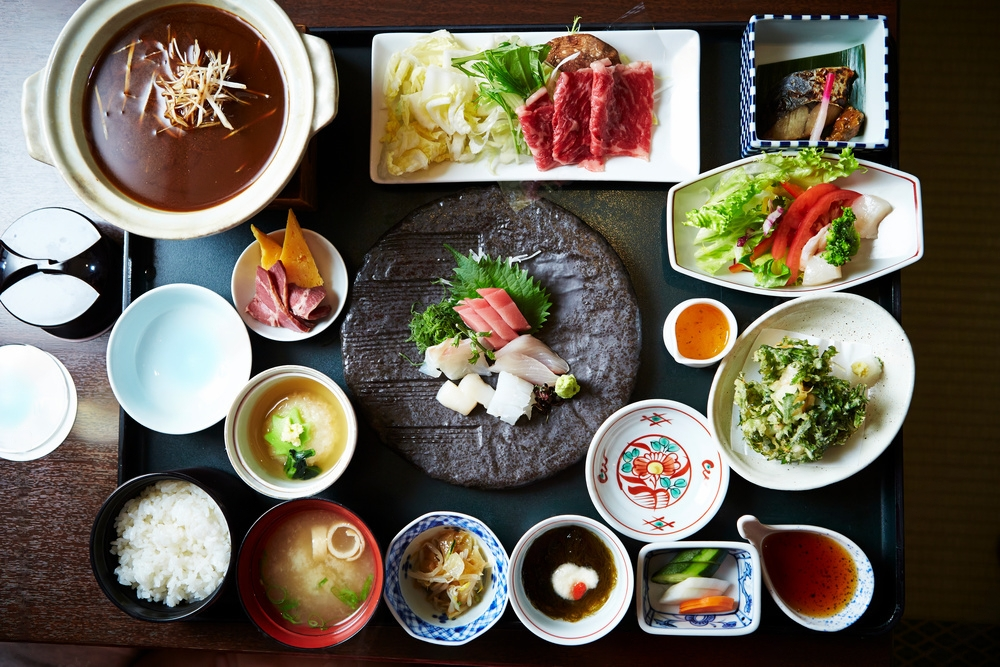The culinary world has moved beyond merely preparing delicious food. Today, it’s equally about the presentation – transforming that succulent roast or fluffy soufflé into a visually appealing masterpiece. After all, we eat first with our eyes, making dish presentation pivotal in enhancing a meal’s overall appeal and dining experience.
This post will explore some innovative and exciting ways to turn your everyday dishes into gastronomic wonders.
1. Use Colour Wisely
Colour plays a significant role in meal presentation. Incorporate a variety of hues, but ensure there’s harmony. Consider your dish’s main elements, then add contrasting and complementing colours with garnishes or sides. Fresh herbs, edible flowers, brightly coloured sauces or spices can add a vibrant touch. A Caprese salad with ripe red tomatoes, white mozzarella, and green basil showcases how stark contrasts create visual appeal.
2. Leverage Texture
Texture also dramatically affects the visual aspect of your dishes. A meal with only one texture might look monotonous and uninviting, while a mixture of textures can bring it to life. Crumbled goat’s cheese atop a smooth butternut soup, crunchy nuts in a soft leafy salad, or oozing melted chocolate in a crispy cookie—different textures help distinguish separate dish components, adding interest and aesthetic appeal.
3. Create Height
The third dimension, height, can make a big difference, too. Layering food isn’t just for lasagnas or terrines—it can apply to any meal. A stack of pancakes appears more appetising than a single pancake on a plate. A burger’s ingredients heaped high exude indulgence. Apply this principle where possible to create a visually engaging dining experience.
4. Plate with Purpose
It’s essential to do more than just drop food onto the plate—every element should have its place. Just as crucial is the fact that you must endeavour to create balance in the overall composition. Chefs use the rule of thirds, positioning main elements using an imaginary grid on the plate, much like photographers do. Moreover, leave some space around the edge of the plate—it’s like a frame for your food art.
5. Timing
Plating food requires careful timing. Make sure you avoid spending too long decorating, altering, or arranging a dish- doing so certifies that it remains at the intended temperature. Therefore, accounting for plating time during meal preparation is vital.
In a pinch, use the classic clock pattern technique: from the diner’s perspective, divide the plate into clock zones. From here, present the starch from 9 to 12 o’clock, vegetables from 12 to 3 o’clock, and protein from 9 to 3 o’clock.
6. Innovative Serving Ideas
Be innovative with how you serve your dishes. Foods in jars (like parfaits or layered salads), hollowed loaves of bread as soup bowls, or serving dips in bell peppers—think creatively. How you serve food can significantly enhance it, making it more engaging and visually appealing.
7. Garnishes and Decorations
Garnishes and decorations are like the cherry on top—they can bring a pop of colour and texture to your plate and enhance the overall dish’s aesthetic. But remember, garnish should be edible and relevant to the dish—it should look and taste good. When done correctly, a spring of dill or a strategically placed slice of lemon can do wonders.
8. The Art of Slicing and Dicing
How you cut your ingredients can vastly affect their visual appearance. Try different techniques: julienne carrots, brunoise red peppers, chiffonade basil. The uniform cuts reflect professionalism and effort put into the preparation, fueling diners’ anticipation.
9. Use Dinnerware as a Canvas
It isn’t easy to overstate the importance of the plate itself. Its colour, shape, and even weight can influence how you perceive the food. White, naturally, is a universal choice, providing a clean, neutral stage for your culinary creations. However, don’t be afraid to experiment. Bold, contrasting colours can make the food’s colours pop, whilst an unusually shaped dish can add an element of fun and intrigue. In some cases, you can use the plate to reflect your meal’s theme.
Conclusion
Presentation is an essential aspect of food that works wonders in elevating the dining experience. So, while creating delightful food is the goal, these tips can ensure your culinary creations are a visual feast before they become a literal one.
Remember, the journey from the oven to the table is just as exhilarating as cooking. It’s the final touch of an artist on their canvas, expressing their love and passion for the food. So, unleash your creativity and turn your dishes into spectacular works of edible art.

